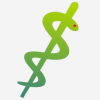There's no reason why you cannot use a calculated estimate of the number infected. Why are you saying that you cannot compare calculated figures to empirical ones?
Sure, you will always worry that your calculation is out, because the calculation mathematics has not been validated against empirical data for the number infected. But given that we have no such empirical data, a calculated estimate is the best thing we have to go on at this point in time.
Ok, I'm going to try one more time and then I think we've flogged this horse to death.
We have two populations to compare here - the general population (Gp) and the methylene blue cancer (Mbc) population.
We have a number for the reported cases in the general population. These are people that were sick enough to go to a doctor/hospital and get diagnosed as having sars-cov-2 (i.e. covid-19). Not counted are asymptomatic people who's symptoms were very mild or had no symptoms at all. Hopefully we agree on this so far.
What you would have me do is take the reported cases in the general population and adjust them to reflect the total cases (diagnosed + asymptomatic) in the population. Ok, we can do that. Let's not worry about the accuracy of the model because it has no bearing here. I'll stipulate that the model is 100% accurate.
Fine, we've adjusted the reported cases in the Gp to be total cases.
Now, I can't compare total cases in the general population to reported cases in the Methylene Blue Cancer population because that would overstate the difference. I have to have some way to adjust the reported cases in the Mbc group to reflect the total cases in that group. If I had that then I could compare the total cases in the Gp group to total cases in the Mbc group.
Here's the rub - I don't have a model to do that. I can't use the model I used for the general population because the assertion is that taking methylene blue altered the dynamics of sars-cov-2 infection in that population. So that model doesn't apply here. I don't have a model that takes reported cases for this group and returns total cases. I could test everyone in the Mbc group for sars-cov-2 infection, but no one did that.
The only thing that I can compare is reported cases in the Gp group to reported cases in the Mbc group, because those are the only equivalent metrics that I have.
There's nothing more left to be said about this.























































